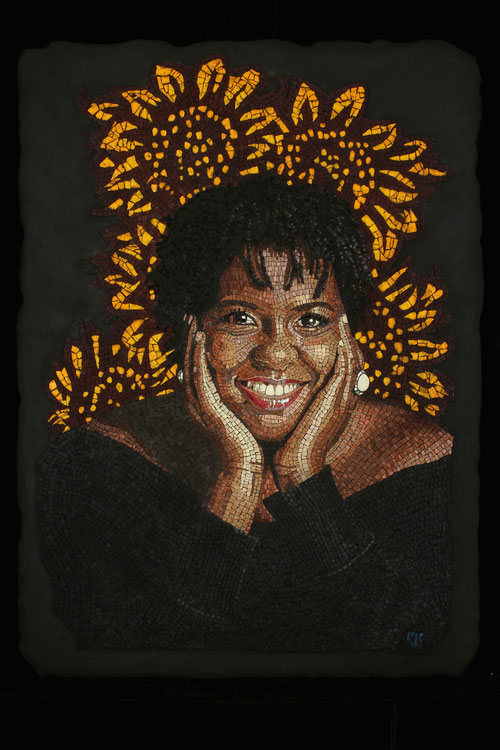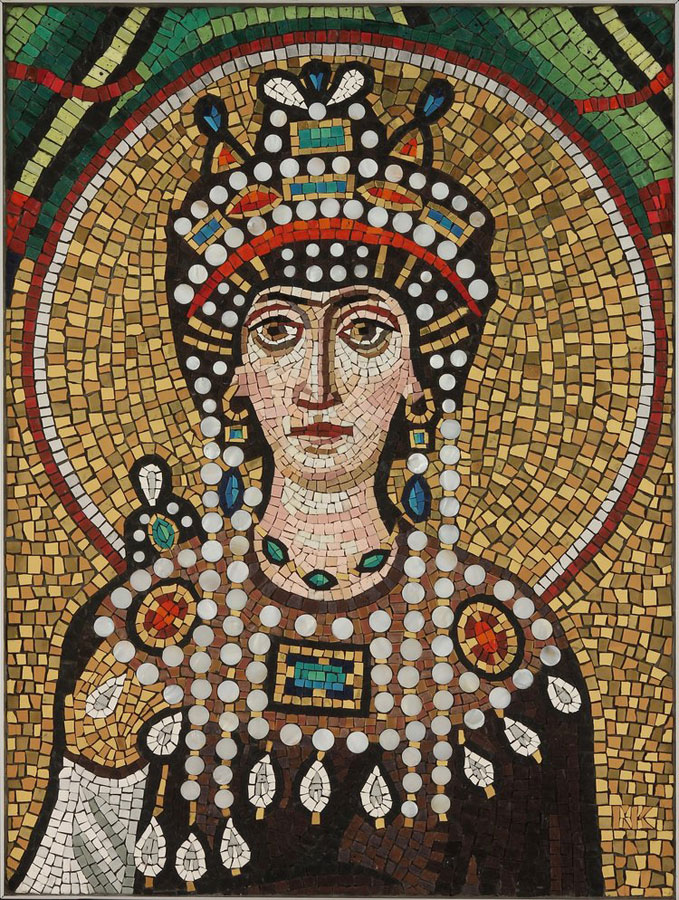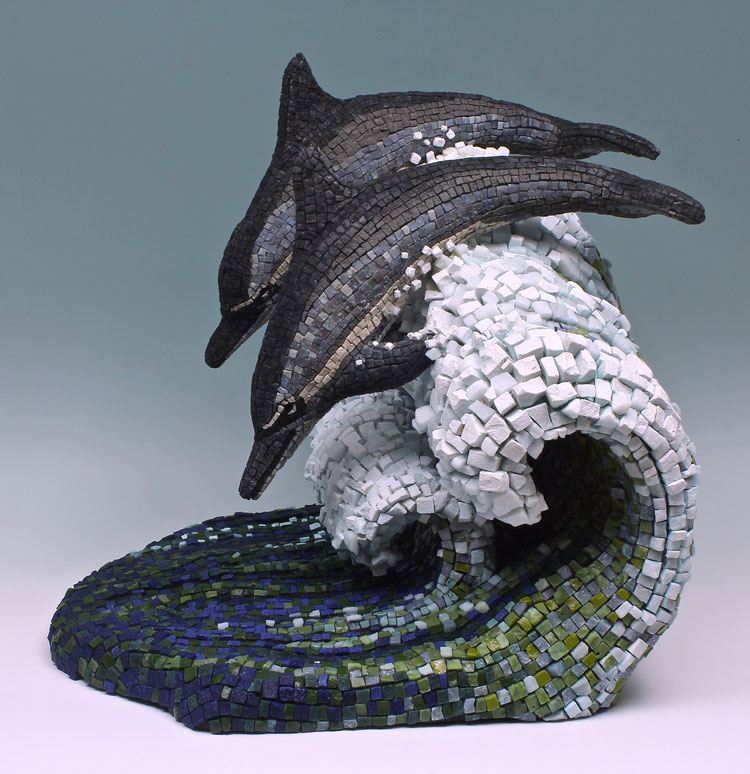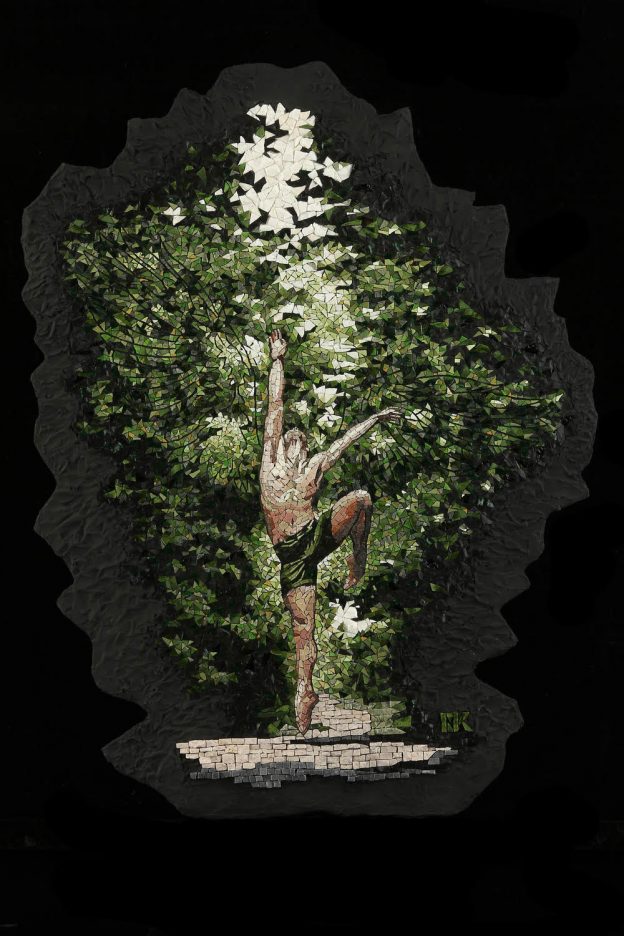Mosaic Artist Michael Kruzich has a body of work worth taking a look at, especially if you have any doubts about how well dramatic lighting can be rendered in mosaic portraiture and other figurative mosaic artwork.
But that’s not all that you need to see of his work. Michael has also made some mosaic-clad figurative sculpture that is as interesting in it’s abstract geometrical textural elements as it is in it verisimilitude –plus he has some stylized, classical and medieval interpretations. These stylized pieces are as eye catching as Michael’s naturalistic work. The reason is simple: All of Kruzich’s mosaics make great use of contrasting light and dark elements in addition to using strong pairs of complementary colors.


What Color For Your Leaves?
What color green should you order for the leaves of your tree? It depends on what type of lighting you would like to depict. Even if you don’t intend to make something naturalistic and are thinking more stylized and simple, you should still use one color instead of two so that you can show shading or outlining. A light and dark version of the same hue or similar hues work much better than one color.
A More Advanced Concept
Consider how Micheal used about 7 different greens plus white to render sunlight shining down through thick foliage in his “La Primavera” mosaic. Notice how the most intense green, the “sour apple” green is used sparingly so that its intensity doesn’t overwhelm the chiaroscuro effect of the light and dark foliage. Less is more.

How to Make an Irregularly-Shaped Mosaic Backer
A backer similar in appearance to what Michael used for his “La Primavera” mosaic could be made by coating several layers of hardware cloth with thinset mortar. Hardware cloth is a grid mesh of thin galvanized steel wires and is available at building material stores. It’s most often used to keep squirrels out of vents and downspouts. You can use the kind with 1/2″ spacing or 1/4″, or both together like I sometime do.
About 3 or 4 layers of hardware cloth wired together should be stiff enough for anything under 18 inches wide, but you can use additional layers and add steel bar stock, expanded metal, and other steel reinforcement for larger works.
The hardware cloth can be cut by snipping one wire at a time with a pair of diagonal cutting pliers (side dikes) or cut like cloth with a pair of tin sheers. The cut wires at the edges of the sheets can be bent back and twisted and used to hold the layers together. Additional wire be wrapped at the center of the shape to ensure that the layers stay together during the coating process and make the finished backer stronger. You should also consider incorporating mounting hooks/eyes or some other type of mounting hardware into this frame before coating the frame with thinset mortar.
Here are my instructions for working with thinset mortar.
I would used multiple coats of thinset, with two days between coats to allow the thinset to cure and contract before more is added. All layers should be dyed if concrete dye is used to color the thinset. If the mosaic is ever scratched at the edge and the internal layer exposed, then it won’t be light and artificial looking. It will look like more of the nice dark gray or charcoal or terracotta color you chose for the outside.
Featured Photo Credit
“La Primavera” Mosaic by Michael Kruzich. 2015, 4′ x 3′, Italian and Mexican smalti, stone, stained glass, vitreous glass. Original working photo by Nick Korkos.


Leave a Reply